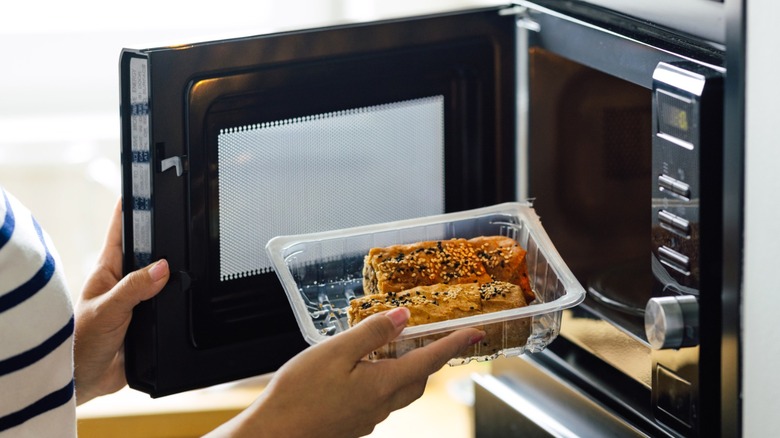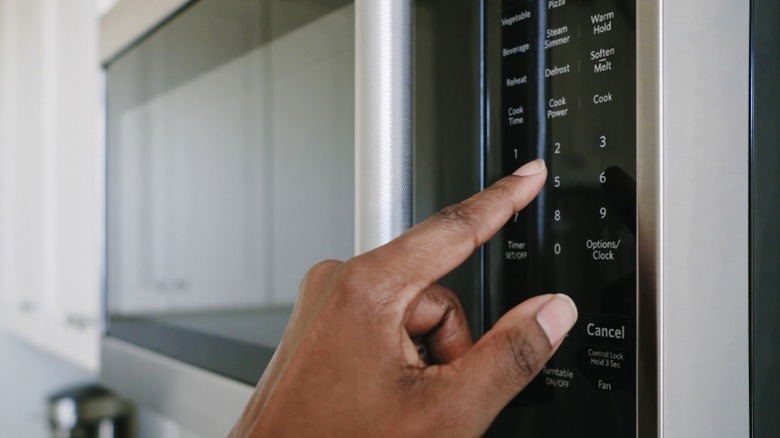What Does It Mean For A Microwave To Have Sensor Cooking
Microwave ovens immediately became the ultimate kitchen convenience when they debuted in the 1940s, and their benefits have grown substantially since due to their ever-expanding features, letting you use your microwave for more than you may realize. Though hardly new, sensor cooking is an essential detail for many. With a few button presses to customize your needs, the microwave automatically monitors and times the cook for perfectly heated food without any guesswork. It's an easy feature for any novice to use without much direction, and even kids can learn to make their own food with the handy feature. But when you understand how sensor cooking works, you'll discover a few simple ways to guarantee even better results.
Sensor cooking in a microwave involves a small humidity sensor that connects to the microwave's control board. You put your food into the microwave and select the sensor cooking option or choose the type of food. Microwaves often have sensor cooking options for several foods, such as fresh or frozen vegetables, potatoes, or popcorn. When you make your choice, the dish begins cooking. The sensor constantly adjusts the power level and cooking time until the food is completely heated. The microwave does the monitoring, so you can set it, forget it, and focus on other cooking tasks. A timer begins when the sensor determines the food is almost done, preventing under- or overcooked food and uneven heating.
It's worth understanding how microwave sensor heating works
The standard microwave oven sensor detects moisture in the oven's cavity. As food heats, the steam travels to the sensor, telling it whether the food is cooking adequately and to adjust for even heating. Knowing this, there are simple ways to get optimal results when using your microwave's sensor function. Start with a dry oven interior. Leaving moisture in the cavity is a common mistake while using a microwave oven, as it can create steam on the sensor and give an inaccurate idea of how long to cook the food.
Since the sensor checks humidity, keeping your dishes loosely covered is vital. If you leave a tight seal, the moisture will stay trapped in the dish, often resulting in overheated food. Leave lids loose, and poke vent holes in plastic wrap coverings to release steam.
To ensure the sensor accurately gauges the cavity's humidity, you should also leave the door closed until the timer begins. Open it too early, and you'll release steam. The sensor will then alter the time it takes to finish, causing the food to cook improperly. When the timer starts, the sensor has finished making adjustments, so you can safely open the oven to stir your food. There are many considerations when buying a microwave, but quality sensor cooking functionality should be a top concern if you want the full convenience these handy appliances can offer.

